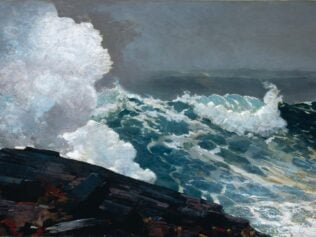
time 2 minutes
A Trip to Świder holds a unique place among Konstanty Ildefons Gałczyński’s poems. Written in 1949, it first appeared in “Przekrój”, to which Gałczyński was a regular contributor (and which indeed is mentioned by name in the course of the poem). Although it was published as one of the mini-dramas he had written for the so-called Green Goose Theatre, it cannot be considered the most representative example of the series. Anecdotal as it may sound, it is a known fact that Gałczyński submitted A Trip to Świder only when he had failed to finish another ‘Green Goose’ piece on time. This may throw light on one of the songs included in the poem, namely “The Song of the Rojek Brothers” (the Polish Bracia Rojek being one of the “Przekrój” editor-in-chief’s many pseudonyms).
In A Trip to Świder, Gałczyński takes his readers on a trip to a one-time summer and health resort in the suburbs of Warsaw. Świder, as both the village and the river that flows through it are called, developed at the turn of the 20th century and was favoured mainly by the Jewish population of Warsaw. Now, post-war, with the capital of Poland in a state of ruin, it is more a place of residence than a holiday retreat. Still, the poem does not show much concern with the new reality – least of all in the polyphonic, cabaret episodes that take place on the train journey down to the village.
In the years immediately preceding the outbreak of World War II, Gałczyński and his family lived in the nearby Anin, along the same railway line – a period they referred to as the happiest of their lives. And though he had already bid farewell to that time in another long poem (Noctes Aninenses), A Trip to Świder seems a deliberate attempt to revive precisely that spirit of undisturbed summer vitality (with “Miss Nina’s name day” celebrations being an actual event). A note of nostalgia for the delights of a lost world can be heard, moreover, when Gałczyński comes to describe the former guesthouses in Świder; the lavishly ornamented wooden villas commonly called ‘Świdermajer’. Representing a mixture of styles, and thus bearing some resemblance to traditional Russian wooden architecture, they can easily be imagined as the setting for certain stories by Chekhov, as Gałczyński points out in the penultimate part of the poem.
Gałczyński coined the term ‘Świdermajer’ himself for the purpose of his ‘trip’, punning on the German Biedermeier. Gradually, the term has become the official designation for that distinctive architectural style, which can only be encountered in this region of Poland – this is why the poem is particularly cherished by the local community. For other readers, hermetic as it sometimes appears, A Trip to Świder is carried along by its musical brio, its dream-like marriage of fantasy and truth, and its kaleidoscopic blending of dissimilar tones and images, which, to quote Czesław Miłosz, “chase one another with the speed of a hurtling train”.
Read Konstanty Ildefons Gałczyński’s poem “A Trip to Świder” here.










